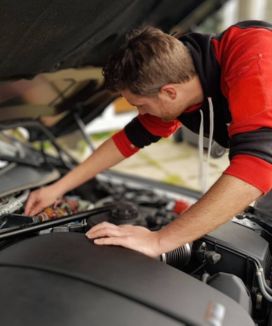How To Winterize a Car for Storage: 8 Steps
Table of Contents
Table of Contents
Winterizing a car for storage is a great idea if you live in a country that experiences cold winter weather, and it’s definitely recommended if you own a classic car.
Storing your car properly over winter can help prevent damage from occurring, and it can also help keep it in good condition for when it’s needed again, prolonging its lifespan.
There are a few things you need to do in order to ensure it’s kept safe. Here’s how to winterize a car for storage:
- Choose a suitable storage location
- Fill your gas tank and add fuel stabilizer
- Check and top-up fluids
- Add air to your tires
- Clean and dry your car
- Secure your garage
- Charge (or remove) your battery
- Cover your car
So, those are the steps to take, but let’s look at each of them in more detail, along with the reasons you should winterize your car for storage.
1. Choose a suitable storage location
Choosing a good storage location is one of the most important factors in preserving your car over winter. Reducing moisture is the key to preventing your car being damaged while it’s tucked away for the winter season.
As such, you’ll want to find a location that’s dry, relatively warm, with a consistent temperature for the duration of the storage.
The type of floor is also important. A sealed concrete floor will reduce moisture and help keep your car dry, whereas leaving it on a dirt floor will expose it to the elements and increase the chance of rust forming.
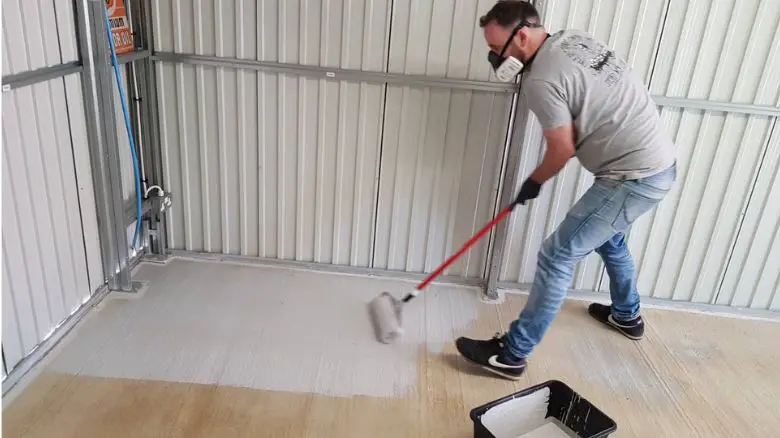
A power supply is another consideration, as it will allow you to use a dehumidifier and heater if needed to regulate the temperature and humidity. It will also allow you to plug the battery in to a trickle charger (more on that later).
If you have a garage, that’s ideal, but if not, you can also look for a storage unit or a specialist car storage company to look after your car for you.
There are plenty of ways to store a classic car, but the best option is your own garage.
When we store our ’90s BMW 8 Series for the winter here at The Car Investor, we make full use of a dehumidifier and heater to regulate the temperature as much as possible. It’s a great way to keep our classic car in good condition.
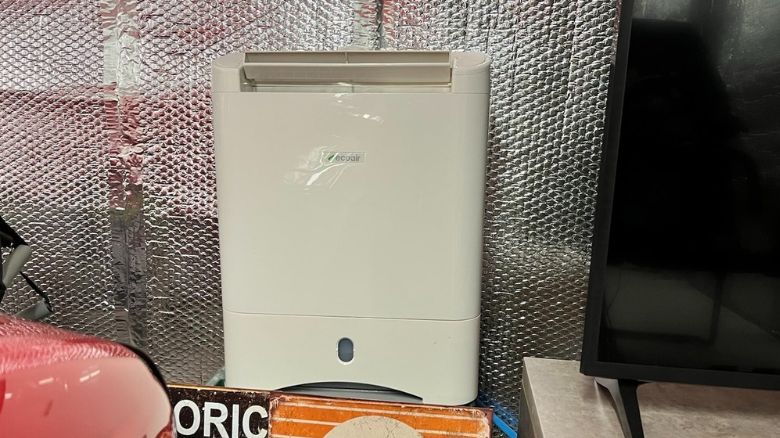
The downside of this, however, is that it does use a fair amount of electricity, so if you’re planning on storing your car for an extended period of time, it’s worth considering the cost.
2. Fill the gas tank and add fuel stabilizer
Filling up with gas before storing the car for winter minimizes the chance of corrosion damaging the inside of the tank as a result of condensation forming in the empty space. Having a full tank means there is no empty space.
You’ll also want to add a fuel stabilizer to the gas tank, as this will help prevent the gas from going bad over winter. Gas can start to degrade after just one month thanks to moisture and oxygen exposure, and stabilizer bonds with the fuel to prevent it from evaporating.
Here’s how to use fuel stabilizer:
- Run your gas tank low
- Add the correct measure of stabilizer to your tank (read the instructions as this amount can vary)
- Fill your car with fuel
- Drive home. If the drive is less than 10 minutes, leave the engine running for a few minutes when you get back to circulate the stabilizer
If you’re not able to run your gas tank low, you can still add the stabilizer. Running it low just ensures the best spread of the stabilizer throughout the fuel system.
We add fuel stabilizer to our BMW 8 Series every year when it’s time to put it into winter storage, and it’s always started up first time the following spring.
3. Check and top-up fluids
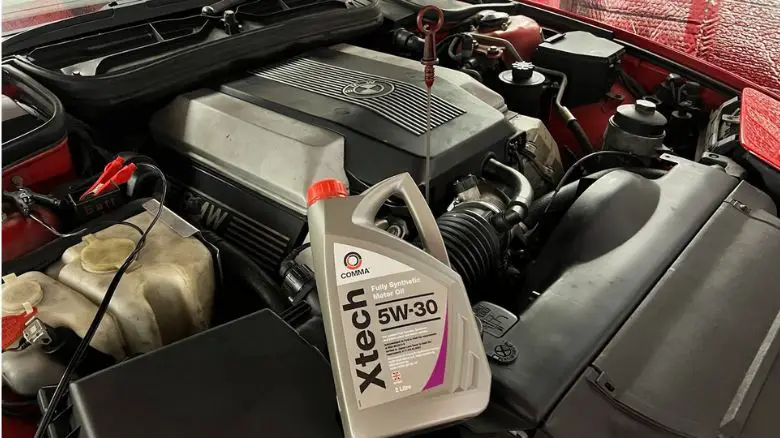
All fluid levels should be checked, and topped up where necessary. Antifreeze (coolant) is particularly important, as this will prevent any chance of the water freezing if temperatures do drop significantly.
And it’s not only the amount of antifreeze you have in your system, but how long it’s been in there. Antifreeze should typically be flushed and changed every three years, or every 30,000 miles. Doing this ensures it remains effective, as the chemicals in the coolant can break down over time.
Other fluids to check and top up as necessary include:
- Engine oil
- Windshield washer fluid
- Brake fluid
- Transmission fluid (if you drive an automatic)
- Power steering fluid
Tip: if you want to be extra safe, you can consider changing your engine oil and oil filter before putting your car away for the winter. This ensures there are no contaminents being harbored in your engine over winter.
4. Add air to the tires
Tires lose air over time, so it’s a good idea to get them filled to the correct pressure before storage. This will help to prevent them from becoming flat or damaged while they’re not being used.
Depending on how long you’re leaving your vehicle, there is a chance that the tires could become misshapen from sitting in the same position for an extended period, although modern tires are much better at preventing this.
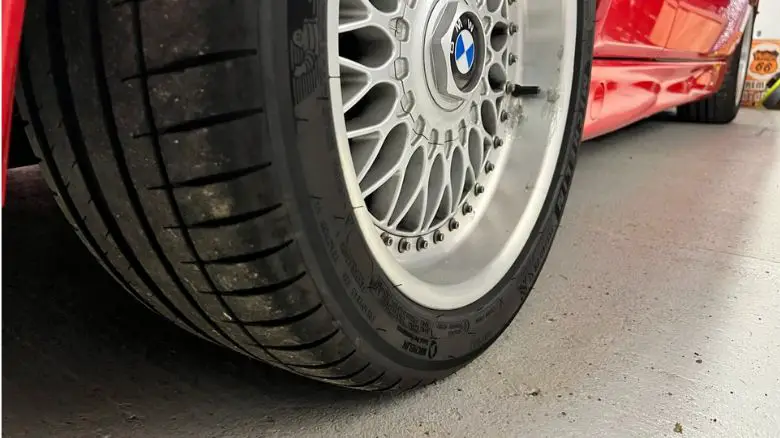
You can prevent this by putting your car up on jack stands to take the weight off the tires. While this is a little more challenging than simply leaving your car on the ground, it does provide extra peace of mind that your tires will be in good condition when you come to take the car out of storage.
5. Clean and dry your car
Before you put your car away, it’s important to give it a good clean. Layers of dirt and grime will have built up during use, and if left uncleaned, it can lead to rust forming.
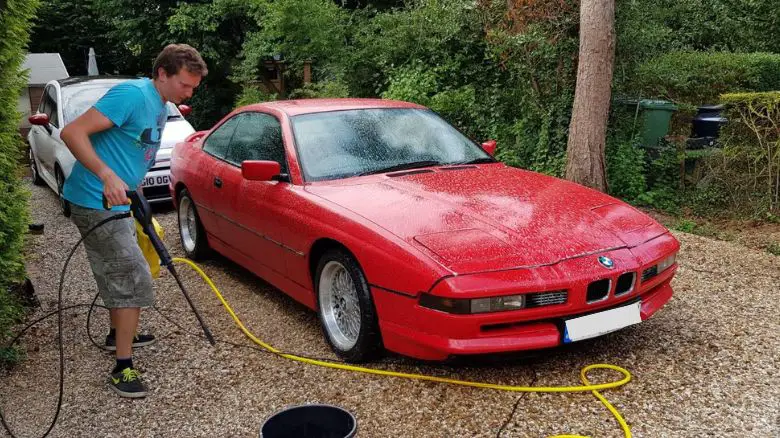
Wash the outside of your car thoroughly, paying special attention to areas where dirt (and particularly salt) may have accumulated. These include:
- Under the wheel arches
- Along the rocker panels (sills)
- On the exhaust
- On the wheels
- The underside of the car, including the axles
Cleaning the underside of your car is particularly challenging, but you should be able to get the dirt off by spraying underneath with a high-pressure hose.
You may also want to consider waxing your car to give it a little extra protection, and vacuuming the inside to get rid of any crumbs that may attract vermin.
Once you’ve finished cleaning, make sure the car is completely dry before taking any further steps. You can do this by using waffle weave and microfiber towels to remove all moisture without damaging the paintwork.
6. Secure your garage
Your garage should also be sealed and secure so that:
- Nobody can steal or damage your car while it’s being stored
- No rodents are able to make your car their home for winter hibernation
If you do own your own garage, it’s likely you’ll have it secured anyway to prevent unscrupulous access. But people often forget to seal any gaps where rodents could potentially enter.
Rodents love finding warm, secluded places to bed down for the winter, and a garaged vehicle is the perfect hiding place.
Unfortunately for us car lovers, they can cause untold damage to vehicles if they are able to gain access. They’ll often gnaw through electrical wiring, and make a mess of the upholstery if they get inside the car.
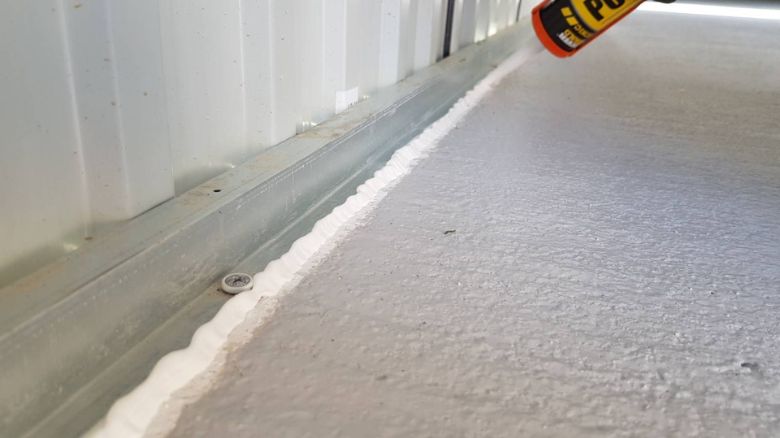
In extreme cases, they can even cause fires when chewing through electrical wiring, so it’s vital to prevent them from getting into your car in the first place.
You can do this by:
- Thoroughly checking your garage floor and walls for any holes or loose bricks
- Filling any gaps with expanding foam or cement
- Sealing any gaps around doors and windows with weatherstripping or caulking
- Leaving mouse/rat poison or traps near the vehicle
- Ensuring there is no food left in the garage or the car
- Getting a cat!
Okay, employing the services of a cat might be taking it a little far, but the other measures (particularly sealing the garage) should be enough to keep rodents at bay.
Tip: some people even plug their exhaust pipes and any inlets to be doubly sure.
7. Charge (or remove) your battery
Once you’ve moved the car inside the garage, it’s time to plug it in to prevent the battery from going flat. A trickle charger is a device that attaches to the battery and slowly charges it, preventing it from discharging over time.
Be sure to get one with an automatic shut-off feature, to prevent it from being overcharged.
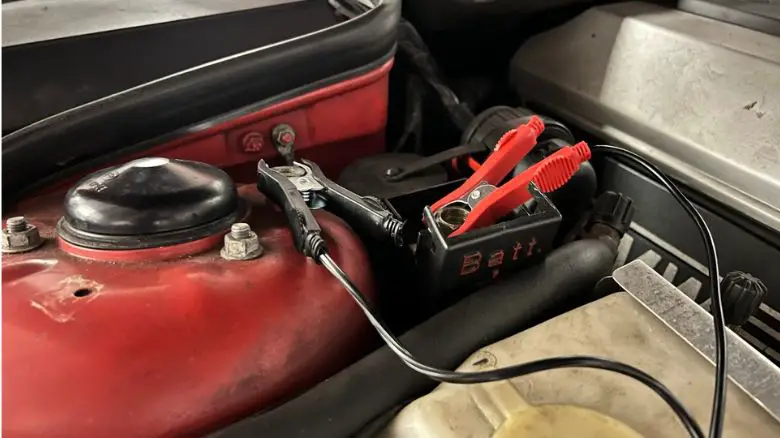
As we mentioned earlier, it’s ideal if your storage area has a power supply so that you can keep the battery in tip-top condition. If not, you’ll want to consider removing the battery altogether so that it doesn’t drain while the car is in storage.
Our preference is to trickle charge our 8 Series over the winter. It’s easier, and we don’t have to worry about storing the battery or refitting it when we come to take the car out in spring. It also means we don’t have to reprogram the radio every time!
If you do choose to remove and store your battery, ensure you’re familiar with the process, or utilize the help of a friend or professional who knows what they’re doing.
Working with anything electrical can be dangerous if you don’t know what you’re doing.
8. Cover your car
The final step to putting your car into full hibernation is placing a cover over it to protect it from dust. Even though it’s indoors, it can still get dusty, so this step is vital to keeping your car clean.
A high-quality car cover is the best option as it will completely enclose the vehicle, but even a large sheet will help if you don’t have one. Just ensure it’s suitably protective and won’t rub against the paintwork.
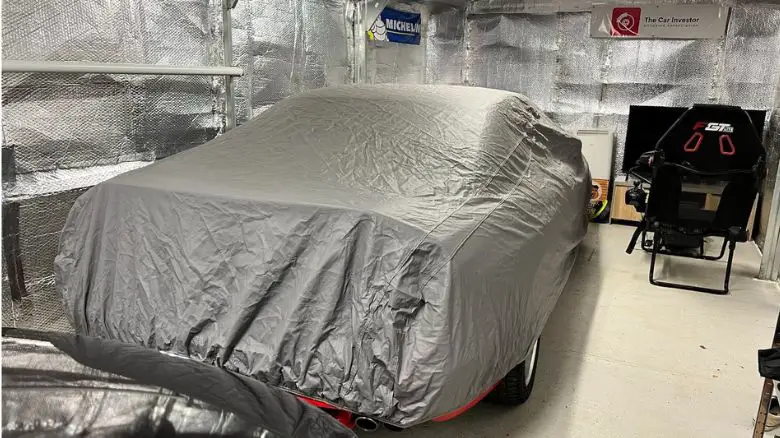
For owners of specialist and classic cars, there are usually custom-made covers available to ensure a perfect fit and the best possible protection.
Car Winterization FAQs
Now that we’ve gone through the main steps of winterizing your car, let’s answer a few commonly asked questions on the topic.
Is it necessary to winterize your car for storage?
Winterizing your car for storage is necessary for owners of classic and specialist cars who reside in areas with particularly harsh winters. It helps to protect the car from extreme winter weather, and prolongs its lifespan.
For more run-of-the-mill vehicles and daily-drivers, it’s not necessary to go through the full winterization process, but some of the steps involved are still helpful to keep the car in good condition.
Regardless of the type of car you own, keeping it garaged when not in use, checking and topping up the fluids, and cleaning it regularly over the colder months will help to protect it and keep it running smoothly when the mercury drops.
In regions that experience snowfall and freezing temperatures, it’s also a good idea to fit winter tires as part of the winterization process if the car will be driven regularly in such conditions.
What happens if I don’t winterize my car before storing it?
Failing to winterize your car before putting into storage could damage the vehicle in more ways than one. Storing it in an unsuitable environment, leaving damaging dirt and grime uncleaned, and letting the battery go flat can all contribute to the deterioration of your car.
Cars are designed to be driven regularly, so when they’re not in use, they can start to experience problems. Failing to take the necessary steps to protect your car while it’s not being used will shorten its lifespan.
One of the main short-term issues with failing to prepare your car for winter storage is that it’s highly unlikely to start when the time comes to drive it again.
The biggest long-term issue is that corrosion is likely to set in, which could cause irreparable damage and lead to costly repairs.
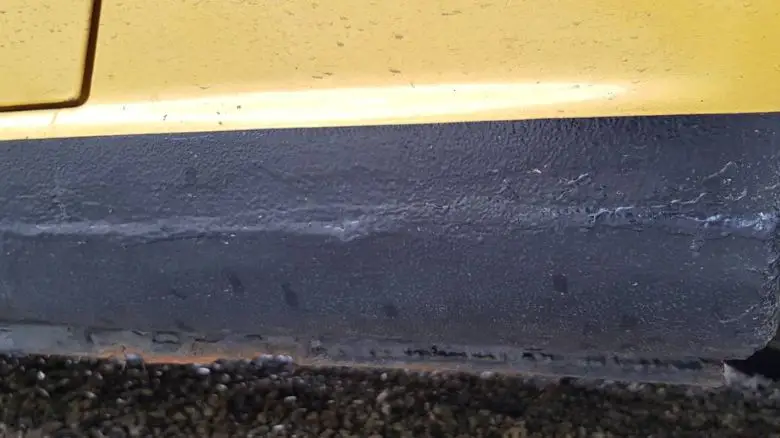
If you’re storing your car for winter, be sure to take the correct precautions.
When should you winterize your car?
Winterize your car before the cold weather sets in. Fall is the perfect time to start the winterization process, as it means dealing with the effects of cold weather before they have a chance to do any damage.
We winterize our classic cars in November, and keep them stored until March here at The Car Investor. This means they’re protected from the worst of the weather, and never have to endure any damaging salt build-ups on the bodywork and underside.
When you choose to winterize your car will depend on where you live in the world, and when the weather starts to turn. Get prepared to winterize your car before the cold weather sets in and you’ll be sure to prolong its lifespan.
Should I start my stored car in winter?
It’s not necessary to start your car when in winter storage if you’ve winterized it beforehand. Starting it could actually cause damage to the car, as it will introduce moisture to the engine and fuel system.
There are some enthusiasts who disagree with this, but briefly starting a car that’s being stored is one of the worst things you can do.
If you do feel the need to start your car over the winter, the engine should be switched on for enough time to warm it up to running temperature. In an ideal world it would also be driven for at least 15 minutes, but in this case it would defeat the purpose of putting it into winter storage in the first place!
Do you have any tips for winter storing a car that we haven’t discussed? Let us know in the comments below.
ABOUT THE AUTHOR
Adam Chinn writes about the intersecting worlds of classic cars, driving pleasure, and smart investment strategies. Starting his journey at 26, he’s proven that one doesn’t need to be wealthy to begin investing in classic cars.
Adam’s insights have been recognized on platforms such as MoneyInc, Swagger Magazine, and Top Speed.



